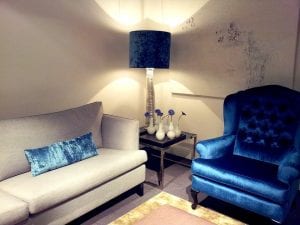 Experts advise to select colors in the room, guided not only by beauty, but also by their influence on the human body.
Experts advise to select colors in the room, guided not only by beauty, but also by their influence on the human body.
Psychologists believe that the colors in the design of the premises are directly related to the emotions that people experience. Experts share active and passive tones. The first have a stimulating and encouraging effect, and the second – calm. So, red and orange with all shades, bright yellow and all bright colors – dispel attention and excite, because they are not recommended for use in offices.
Passive colors create a relaxing effect. However, such colors also cause ambiguous emotions. For example, light pastel colors, bluish and light green hues create a good relaxation and sense of security, while green, blue and light gray colors are neutral.
Violet and lilac shades in design can provoke depressive states, and dark colors — burgundy, brown, marsh green — can depress.
It is also believed that the color gamut can worsen or, on the contrary, optimize the work of different body systems. In this regard, experts advise the use of different colors, in accordance with the purpose of the premises. So, for the kitchen is best to choose the design of pale yellow or soft shades of orange. In such a room, people will have a healthy appetite, and these colors also have a positive effect on the digestive system.
For the nursery, it is better to choose calm colors – light shades of green, blue, gold or turquoise. Bright design can distract the child from school and lead to sleep disorders. It is not recommended to use black, brown, eggplant or marsh shades in the nursery – they can have a depressing effect on the psyche.
The bedroom optimally decorated in neutral colors – blue, green, pink or light yellow. You can also use red elements or muffled lime.
Picture Credit: Feelgoodpics
